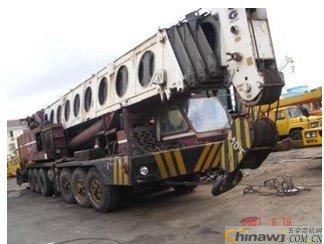In the ever-evolving logistics industry, the sight of cranes operating on the shore has become a common scene. These machines are essential for loading and unloading cargo, and their performance is crucial for the efficiency of port operations. As technology advances, the demands placed on these cranes continue to grow, especially when it comes to safety, reliability, and maintenance. One key component that plays a significant role in this is the braking system. While traditional wheel brakes have been widely used, disc brakes are increasingly preferred for offshore cranes due to their superior design and functionality.
Compared to wheel brakes, disc brakes offer several advantages that make them more suitable for demanding environments like ports:
1. **Better Heat Dissipation** – Disc brakes dissipate heat more efficiently than drum brakes. The contact area between the brake pad and the disc is much smaller, often referred to as "point contact." This reduces heat buildup during operation. Additionally, ventilated discs increase the surface area for cooling, extending the life of the brake pads and reducing the risk of overheating.
2. **Compact Design with High Torque Capacity** – Disc brakes can be installed in tight spaces while still delivering strong braking power. By using multiple disc brakes, engineers can achieve high torque without requiring excessive space, making them ideal for modern crane designs.
3. **Minimal Thermal Expansion** – The brake disc experiences less thermal expansion compared to a brake drum, which helps maintain consistent braking performance even under heavy use. This also allows for quicker response times, improving overall safety.
4. **Easy Installation and Maintenance** – Due to their compact size, disc brakes are easier to install and service. This makes them a practical choice for large-scale industrial equipment where downtime must be minimized.
5. **Lower Inertia** – The rotational inertia of a disc brake is significantly lower than that of a drum brake. This means the brake can engage and disengage more quickly, which is particularly important in emergency situations or when precise control is needed. For example, the YPZ2 series of arm disc brakes from Jiaozuo Brake Co., Ltd. feature automatic compensation mechanisms, such as a back-off device, allowing the brake shoes to self-adjust without manual intervention. This ensures consistent performance and reduces maintenance efforts.

CEPAI Group Co., Ltd. , https://www.jscepai.com